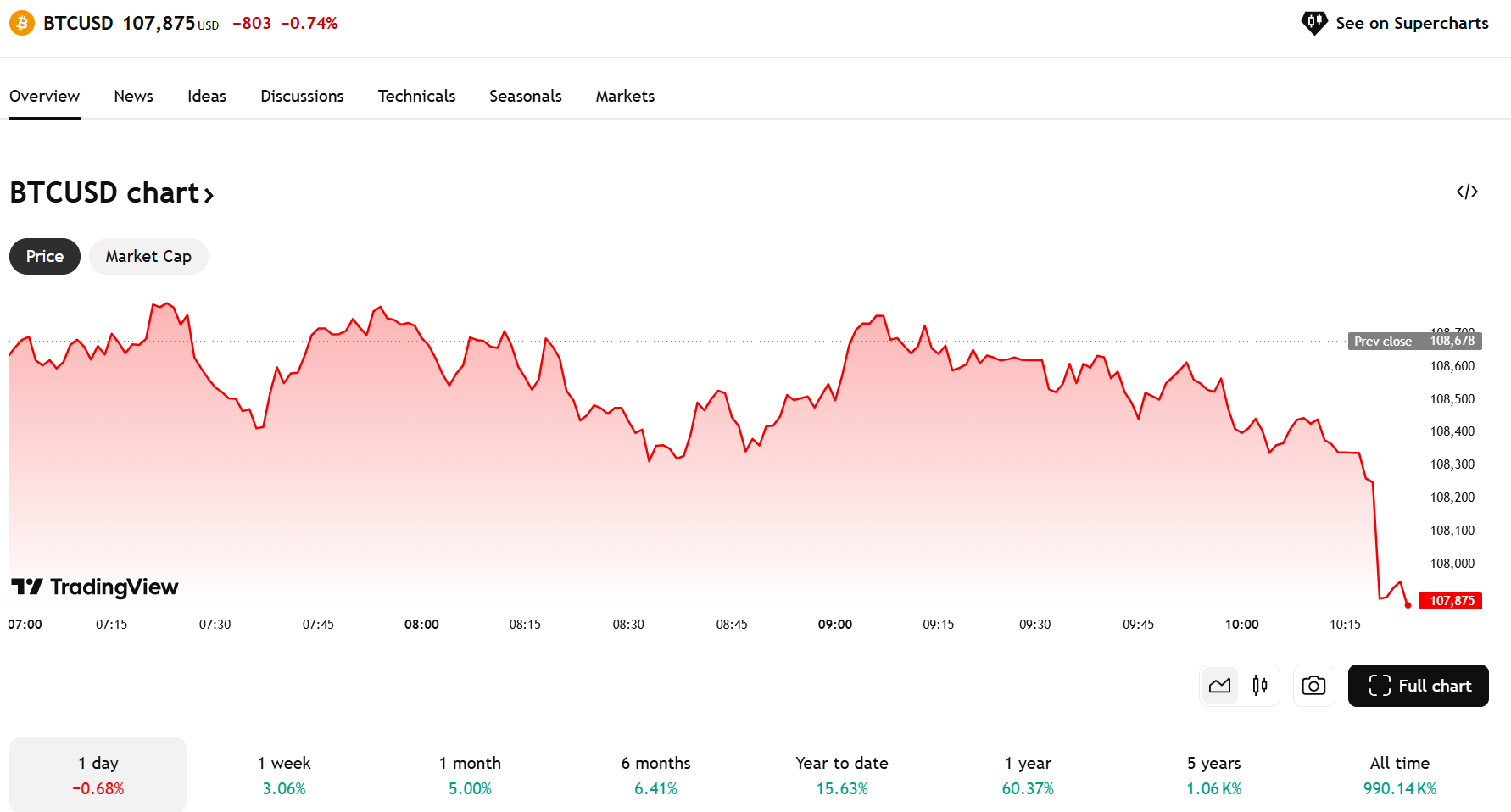Key Takeaways
- Bitcoin’s decline today is influenced by US-China trade deal outcomes and geopolitical tensions involving Israel and Iran.
- The potential for future Federal Reserve rate cuts is increasing despite a slight decline in May’s headline inflation figures.
Share this article
Bitcoin’s early rally to $110,000 quickly lost momentum as US-China trade talks, despite some signs of progress, failed to impress, and tensions surged after Israel told US officials it was ready to launch an operation into Iran.

Bitcoin touched $110,300 on Wednesday after a better-than-expected May CPI print, with headline inflation rising 2.4% year-over-year, slightly below the forecasted 2.5%. The figures offered a brief boost despite worries over tariff-driven inflation pressures.
The largest crypto asset also found support from President Trump’s announcement of progress in US-China trade talks on the day. But analysts say the new deal is still narrow in scope, largely focused on rare earth export controls.
According to Capital Economics’ Mark Williams, major trade barriers are untouched, with tariffs still running at 55% on Chinese goods and 10% on US exports.
Analysts suggest it’s more of a pause than a resolution, even though the administration framed the deal as a win.
No rate cuts expected throughout summer
The Fed is not expected to lower interest rates at its policy meeting next week.
Despite May’s CPI coming in slightly below expectations, inflation rose to 2.4% year-over-year, up from 2.3% in April, and remains above the Fed’s 2% target.
Combined with stronger-than-expected job growth, this has led market participants to almost entirely rule out the possibility of a rate cut in June, according to CME FedWatch data.
The odds of a rate cut in July also declined following the new inflation data, leaving September, November, and December as the only realistic windows for policy easing this year.
Markets now price in a 74% chance of a rate cut in September, rising to nearly 88% in November and roughly 96% in December.

Nic Puckrin, co-founder of The Coin Bureau, notes that excess retail inventory and declining housing prices could drive an overall trend of lower inflation in the coming months.
The analyst anticipates that persistently low inflation may prompt the Fed to cut rates in the coming months, potentially reinforcing Bitcoin’s upward momentum.
Bitcoin drops, gold surges as Middle East war looms
Geopolitical tensions escalated on Wednesday as Israel signaled it was prepared to launch a military operation targeting Iran’s nuclear program, according to CBS News.
In response, the US reportedly issued a warning for Americans to leave Iraq, citing “heightened regional tensions.”
The growing threat of conflict comes as the US is trying to strike a deal to limit Iran’s nuclear program.
Trump’s envoy, Steve Witkoff, said nuclear talks with Iran will continue; however, Israel’s potential military action could dramatically escalate regional tensions and affect US interests.
Spot gold spiked to $3,377 during the early Asian trading session on Thursday following fresh developments in the escalating Israel-Iran conflict, according to TradingView data.
Meanwhile, Bitcoin dipped below $108,000, posting a modest decline on the daily chart.
Bitcoin has historically experienced short-term price pullbacks during periods of geopolitical chaos and heightened uncertainty, as investors often move toward traditional safe havens.
However, the digital asset has often bounced back relatively quickly due to its growing recognition as a digital store of value.
Share this article



